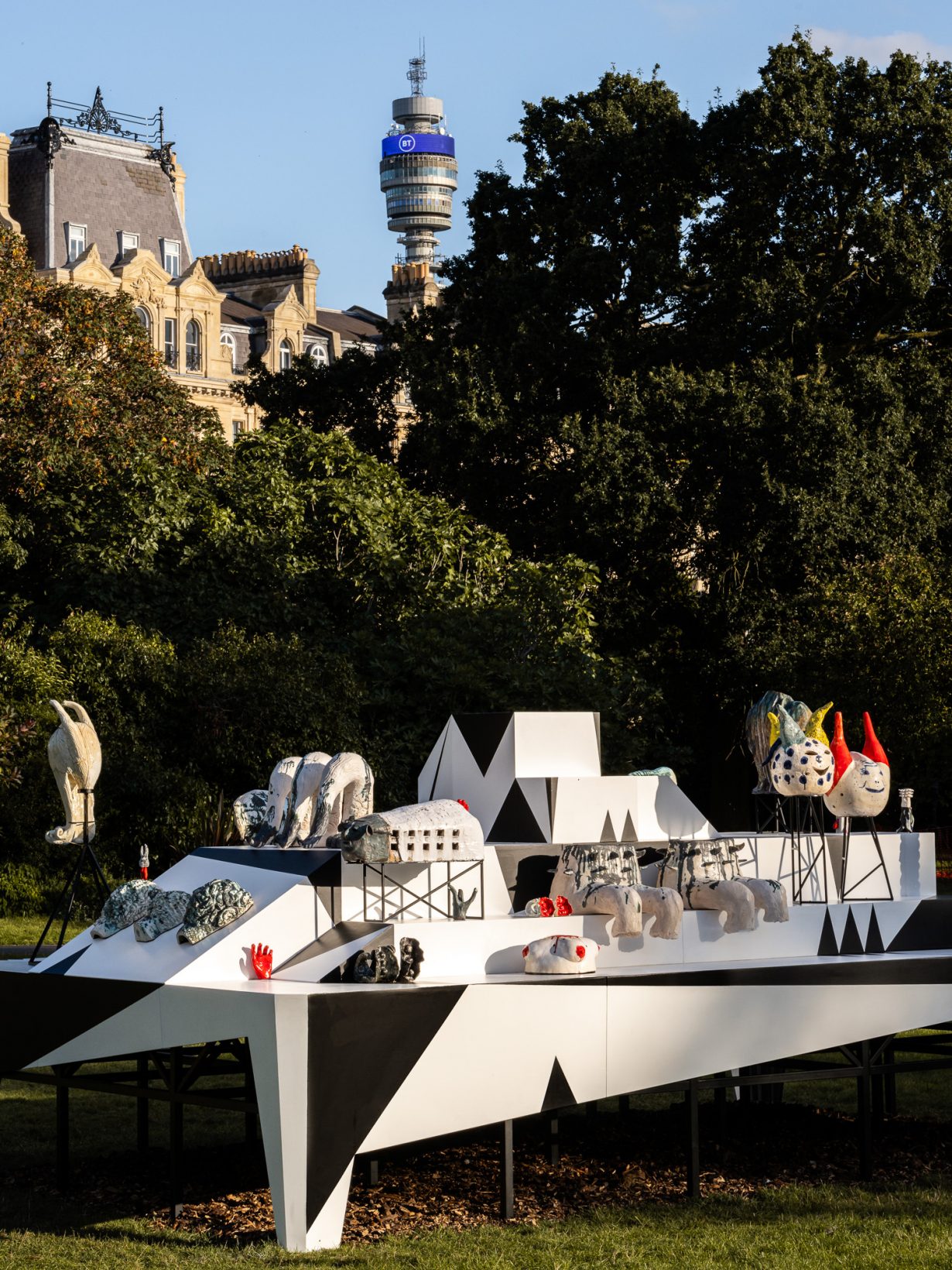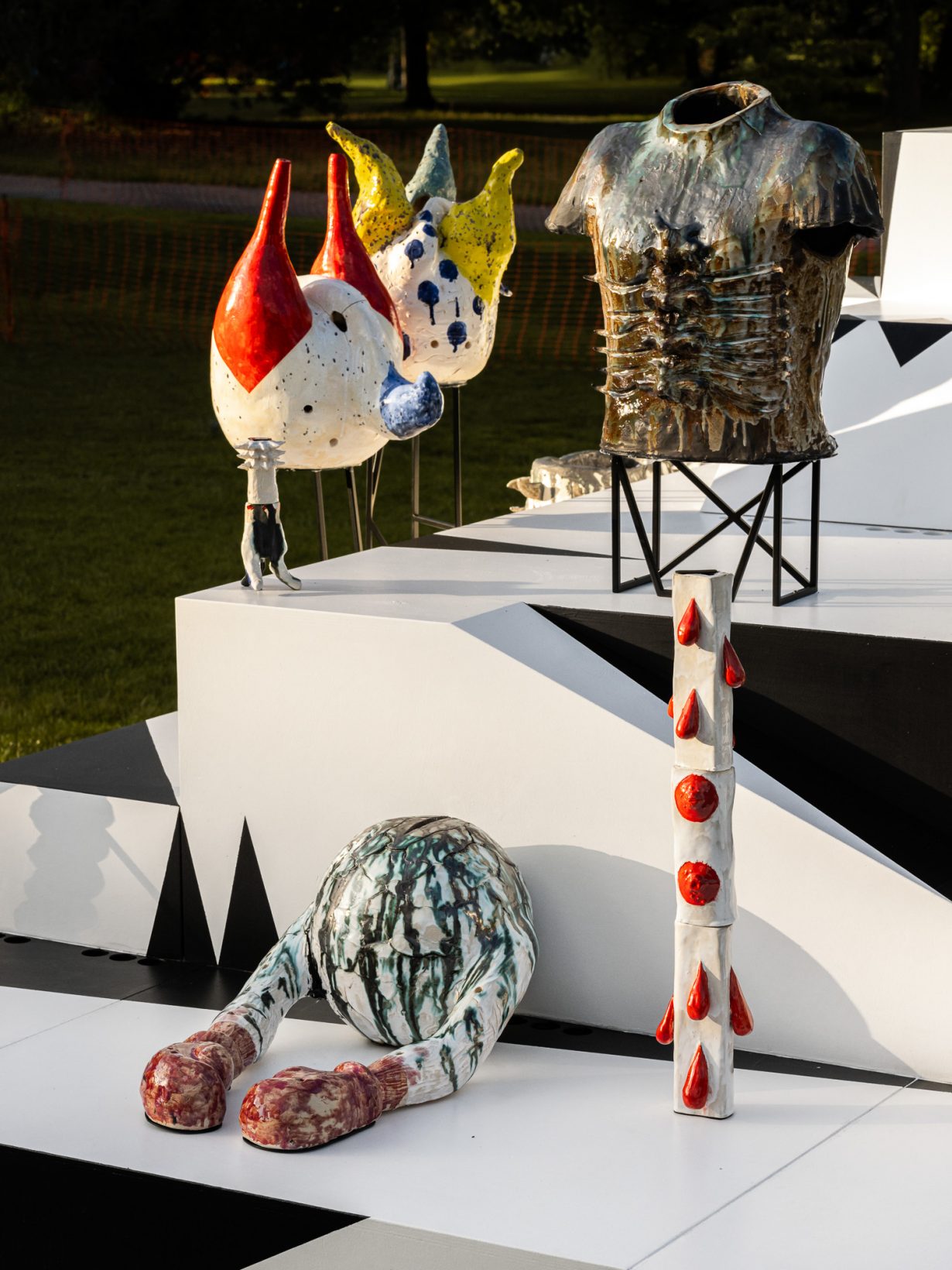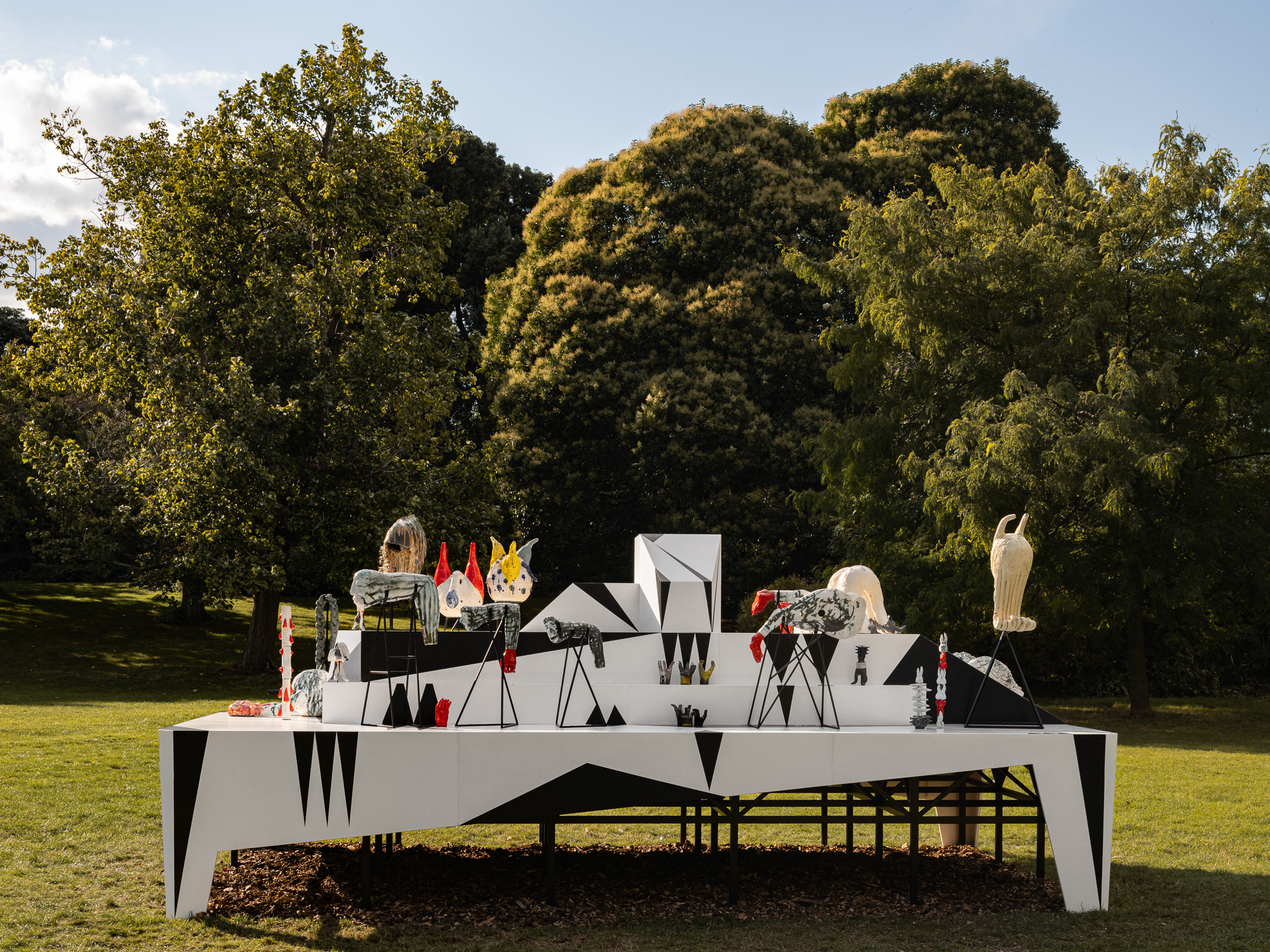The artist on her latest installation, which will be unveiled at Frieze Sculpture 2024
Renowned for her wide-ranging multidisciplinary practice, Istanbul-based İnci Eviner’s oeuvre spans drawing, video, performance and sculpture, exploring historical, discursive, and unconscious processes, questioning and challenging forms of representation and the norms leading up to these. Her latest installation, Materials of Mind Theatre, unveiled at Frieze Sculpture 2024, seamlessly fuses ceramics with performance, creating a theatrical experience where the viewer’s imagination takes centre stage. In this work, Eviner navigates the ambiguous border between the living and the non-living, urging us to confront our inner strangeness. Here, Eviner shares more about this world in which she invites audiences to explore the possibility of different existences.

Vassia Gkogkou Can you walk us through the creative process behind the sculptures you present at Frieze this year?
İnci Eviner My installation Materials of Mind Theatre, showcased at Frieze Sculpture this year, blends sculpture with performance to create a dynamic, immersive mental theatre. The work features 25 ceramic sculptures [all works 2024] arranged on a platform serving as both a stage and a pedestal.
Each costume-like sculpture bears an evocative title such as Boxing Gloves Ready to Fight, representing intense anger, and Quact-Hypocritical Arse-Kissers, figures that mock everything around them, including the artist. The uncanny, often surreal nature of these sculptures invites the audience to craft their own narratives around them.
With these works, I aim to blend the classical understanding of ancient sculpture with the notion of the distorted modern body, fragmented by the politicised nature of contemporary life. In the sculptures, classical ideals of form meet the fractured realities of the present, inviting reflection on the tensions between tradition and modernity whilst commenting on the individual’s position in the modern world.
The sculptures are made of ceramic, which is a particularly compelling material for me because it feels deeply connected to the earth. I am particularly fascinated by how various cultures, especially those from Anatolia, have used ceramics both as a form of self-expression and for everyday objects, blending the artistic with the functional. This rich historical connection inspires my work, connecting me to a long tradition many cultures share.

VG Can you tell us about the performance Under One Body? How do you see the relationship between performance and sculpture in your work?
İE Under One Body is a performance which takes place amongst the ceramic sculptures. A performer, positioned on a pedestal, wears an elaborate costume featuring four legs, four arms and eight hands, symbolising the combined bodies of a puppet and puppeteer. Throughout the performance, the performer’s biological limbs seamlessly merge with the costume’s artificial limbs in an ongoing transformation. At times, the performer retreats like an insect; at other moments, the dance evokes the form of a shamanic ritual.
For me, this performance illustrates how blurred the boundary between the living and the non-living can be. The joyful dance along this uncertain border invites us into a world where different existences are possible. The interaction between the performer and the sculptures also creates a compelling fusion of theatre and sculpture.
Ultimately, I see Under One Body as a dance of freedom, where the body resists ideological representations and seeks to absolve itself of the burden of political identity which is imposed upon it. As the performer struggles to connect with their natural body, the only solution is to explore an alternative mode of existence.
VG How do your drawings interconnect with your sculptural pieces, performances, and video installations?
İE Drawing is at the core of my creative practice, serving as a means of thinking in action. Through the act of drawing, I engage in a dialogue with my subconscious, allowing lines to emerge that express inner impulses and provide a framework for exploring and generating new ideas about shapes, forms, and space. Each stroke carries the potential to unlock new insights or reveal hidden layers of thought. These fluid, dynamic lines often become the blueprint for the scenes, sculptures, and costumes I create, allowing me to translate the intangible into physical form.

VG How do you hope viewers will engage with your work within the context of Frieze Sculpture?
İE The ceramic forms I have created for Materials of Mind Theatre rely on the viewer’s imagination to truly come to life. A unique character is born with each new visitor, and a fresh play gradually unfolds. Every interaction breathes fresh life into the sculptures, inviting unique interpretations and evolving stories.
Each sculpture appears to reject its origins as if longing to serve a different purpose than what it was initially created for. However, they all share a commonality – their existence hovers on the ambiguous border between the living and the non-living.
VG Can you speak about any specific influences – whether artists, movements or experiences – that have shaped your current work?
İE My primary focus is exploring the politics embedded in daily life in Istanbul. Coming from a culture where everything is deeply politicised, I find myself constantly entangled in cycles of history, power and violence. This background makes it essential for me to stay informed, continually engaging in research and reading to better understand the present era’s complexities that demand a relentless questioning process.
Additionally, ancient cultures, and especially Greek philosophy, play a significant role in my work. For instance, the sculpture Resentful Philosophers Burying Themselves on Stag alludes to the ancient concept of philosophers symbolically burying themselves in protest of the world’s state, a gesture of resignation and defiance that resonates with the frustrations that can be felt living in today’s political climate.
On a more physical note, the forms and shapes of my sculptures are often inspired by subtle, everyday gestures – whether made by human or animal forms. I observe how bodies move, interact and react with their surroundings and translate these movements into my sculptures’ fluid, dynamic shapes.
For more information about the artist and her works, visit İnci Eviner’s website and Dirimart’s website.
